This post contains affiliate links.
Adding air to your RV’s tires should be straight forward but when you are faced with dual tires, also known as dually tires or duallies, it can seem a little more complicated. There are a few different ways that you can go about adding air to your dual RV tires, and the best one is going to be the one that you are most comfortable with but some ways are definitely easier than others.
To inflate dually tires, access the inner valve stem (with or without an extender), attach the chuck to the valve stem and use an air compressor with a high PSI rating to fill the tires.
RV tires are expensive, and nothing puts a damper on a trip like a blowout. Properly inflating your RV’s tires is going to help extend the life of your tires and keep your trip rolling smoothly. I’ve got a couple of tips and tricks that will make the process of properly inflating your duallies easier.
Table of Contents
Adding air to the outside tire is easy – you just remove the stem cap, attach the air hose and chuck to the valve stem, fill the tire while checking the pressure, then replace the stem cap. Inflating the inside tire is when it gets fun.
One of the biggest challenges that comes with filling dually tires is accessing the inner wheel’s valve stem. If your dual rims are properly aligned then you won’t have as much trouble reaching it. If you’re like 99% of RV owners, your dual rims won’t seem to be properly aligned.
You can fix this by taking off the outside tire to reposition it so that the inner valve stem comes through the cutouts in the rim. Once your inner valve stem is at least accessible you’ll be able to fill it in the future without taking off the outside tire.
Fix It Yourself is a self-guided online course where certified RV tech Ed Wilcox walks you through all the steps you need to know to properly maintain your rig and fix problems when they come up.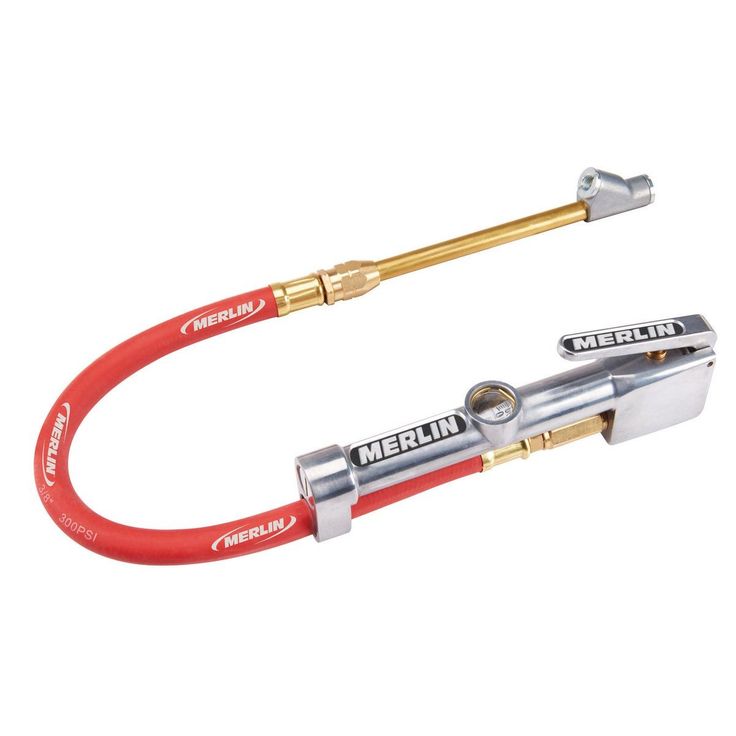 Check it out HERE!
Check it out HERE!
You can either use a personal air compressor or an air pump at a gas station, truck stop, etc to fill your tires, but if you do decide to use your air compressor you have to make sure it has a high enough PSI to get the job done. Dually tires typically should be filled to 80 PSI, and not all air compressors will be able to reach that pressure.
To use your compressor you’ll want to get a pressure gauge that’s long enough to reach the valve stem, which means you’ll need about a 12-inch hose without a valve stem extension installed.
The pressure gauge will let you keep an eye on the tire’s PSI as you’re filling to make sure that it doesn’t get under- or overinflated. You can monitor the pressure by just placing the pressure gauge onto the valve stem without pumping any air into the tire.
Sale
AstroAI Digital Tire Inflator with Pressure Gauge, 250 PSI Air Chuck and Compressor Accessories.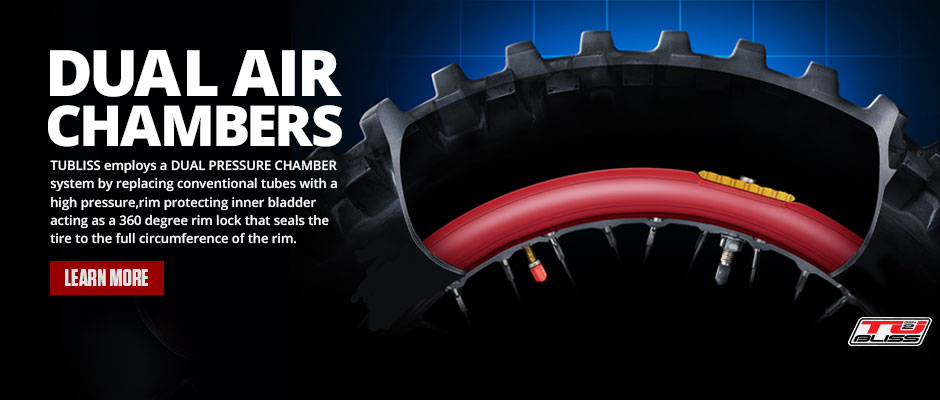 2; Includes an inflator, straight locking...
2; Includes an inflator, straight locking...
If a tire is under-filled it will cause more wear and tear on the tire, not to mention it can make your RV more prone to tipping over which is definitely something you do not want to deal with. If your tire is overfilled, you increase the likelihood of a blowout and you also decrease your tire’s lifespan.
In order to fill the tire, you can try using an angled inflator chuck to better reach the valve stem and you can also find them in different lengths. It may take some playing around with different chucks to find the one that works best for your RV. You can also try getting a valve stem extension with different angles like 90 degrees, 120 degrees, etc.
Once you have your air compressor hooked up, squeeze the trigger/lever on the compressor hose to pump air into the tire and release the lever to see what the tire’s current PSI is.
A valve stem extender is exactly what it sounds like – a part that you can install to extend the length of your valve stem. Most of them are made of stainless steel and they attach directly to the tire stem, and you can leave them installed so that you’re all set for next time.
Sounds great, right? No more cramped spaces, no more fumbling for the valve stem, no more hassle.
While that may sound like the best thing in the universe (especially if you’re already an hour into trying to check your dually tire pressures), most RV forums are actually pretty divided on how well they work and especially how safe they are for your RV.
Some people argue that they’re just as hard if not harder to install than just putting the chuck on the stem, and other people have had bad experiences with them leaking if left on for long periods. Still other people have reported the inside of the valve stem, which is rubber, deteriorating despite the stainless steel exterior.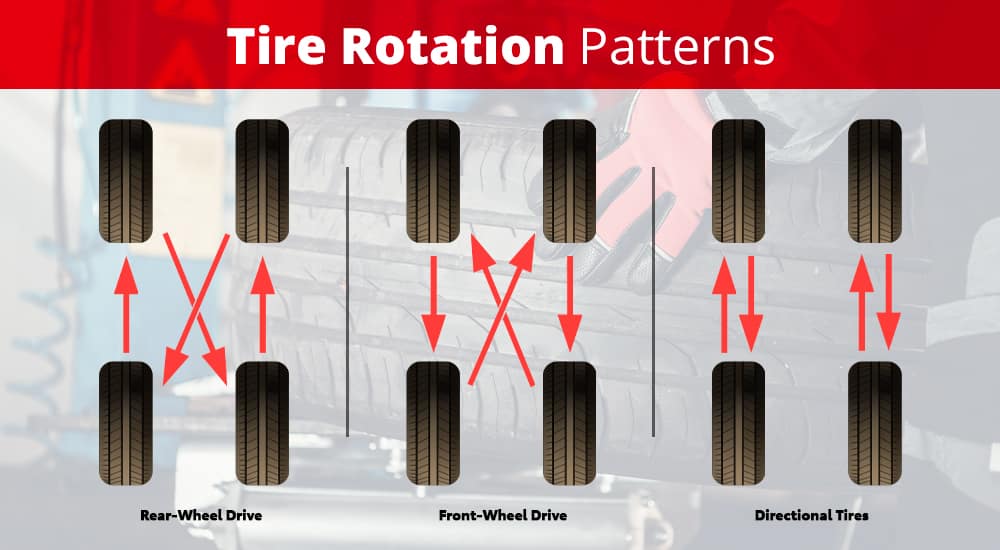
On the other side of the coin many people swear by them, saying they have never had a problem and their valve stem extenders make the dually filling process so much easier.
Some newer and higher-end RVs will come with extenders already installed, which is awesome. If that’s the case then you can use them until you have to replace the tires and then look at replacing the extenders at the same time.
There are many valve extender kits that have good reviews and are recommended on the RV forums, but everyone seems to agree that you should avoid the airless stem extenders. One person reported losing two perfectly good tires in less than a year thanks to leaks from the airless extenders.
CKAuto 6 Pack 45 Degree 90 Degree 135 Degree Metal Valve Stem Extenders, Universal Valve Stem...
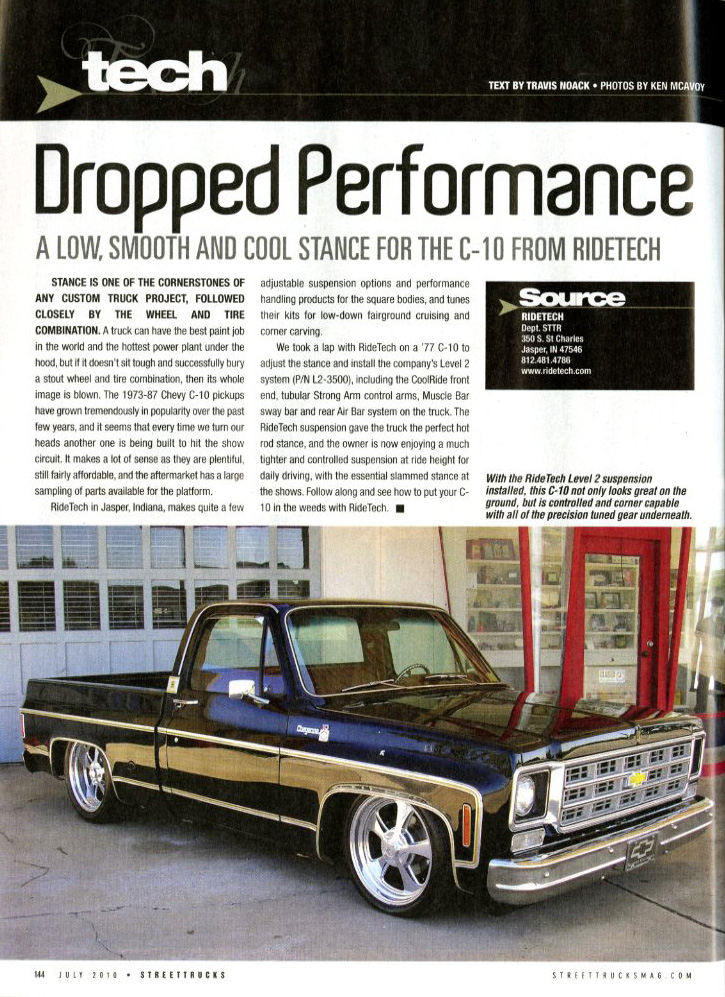 ..
..This is an equalizing valve that allows air to flow freely from one tire to the other, allowing both tires to be at equal pressure. I know what you’re thinking – I just checked the tire pressures and they’re both the same. Why would I need something like this?
While the tires will be at the same pressure after you fill them, on the road is a different story. The inside tire is going to heat up more due to lower airflow and the in-board brakes, and this higher temperature is going to cause the pressure in your inside tire to rise as you travel.
As I mentioned, too-high of pressure can leave you prone to a blowout and put more wear on your tire, so the tire equalization valve seeks to remove that risk.
Products like the Crossfire Dual Tire Pressure Equalization System show you if your tires are properly inflated while allowing the higher pressure in the inside tire to equalize with the outside one. This will add to your tires’ overall life expectancy and hopefully save you money in the long run.
Sale
Crossfire Dual Tire Pressure Equalization System, 110 PSI, one per pkg. (CF110STABT)
Did you know that a tire being 20% under inflated will cause at least a 30% loss in the life expectancy of your tire? Similarly, a tire being 20% overinflated will cause at least a 10% loss in your tire’s life expectancy while increasing the risk of a dangerous situation.
You should check your dually tire pressure before setting out on every trip, and when you fill up for gas while on your trips.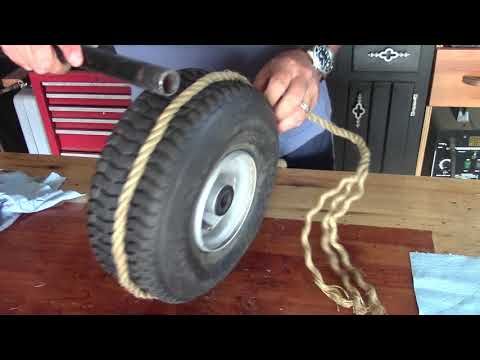 It’s especially important to check if your RV has been sitting still for a while, as dry rot can cause leaks and other issues.
It’s especially important to check if your RV has been sitting still for a while, as dry rot can cause leaks and other issues.
Generally, your RV’s dual tires should be at 80 PSI, and to check the pressure you’ll need to make sure the tire pressure gauge is rated high enough so that you get an accurate measurement. A pressure gauge that is too low will max out without telling you if you’re actually at 80, and one that is too high may not give you an accurate reading.
But before you go and just fill your tires to 80 psi you’ll want to check the owner’s manual of you RV or the placard stating the tire pressure rating for your RVs tires. You should also check on the tire itself what the rating is.
The rating found on the sidewall of the tire will actually state “maximum load-carrying capacity and the minimum air pressure required to carry this load”. This means it’s a good idea to know what your RV actually weighs for each axle when you are fully loaded for a trip, including all passengers.
Tire pressure should also be checked when cold. This is because when you start driving your tires warm up, increasing the air pressure in your tire. Any manufacturer rating from both the tire and RV will be for a cold tire.
A tire pressure monitoring system is exactly what it sounds like – a way to monitor the air pressure of your tires in real time. This is done through the electronic system that sends periodic reports to the main console and will also alert you of any potential issues.
A sensor is mounted in each wheel or as part of your anti-lock braking system (depending on the model), and these sensors are what monitors your tire pressure,
These systems are fairly pricey up front, but they will save you a lot of money and time on the back end by allowing you to keep your tires inflated at the ideal pressure and therefore reducing the wear and tear on them.
Some monitoring systems will only track pressure while others will also give you information about temperature. The EEZTire-TPMS6 system will give you real-time updates about both while also providing audio and visual alerts to any problems, and it’s one of the highest-reviewed monitoring systems on the market.
The EEZTire-TPMS6 system will give you real-time updates about both while also providing audio and visual alerts to any problems, and it’s one of the highest-reviewed monitoring systems on the market.
EEZ RV Products EEZTire-TPMS6ATC Real Time/24x7 Tire Pressure Monitoring System - Color Monitor + 6...
The most costly parts of RV ownership are repairs and maintenance. That’s why I recommend learning to do your own RV repair and maintenance.
The Fix It Yourself RV Maintenance Course is the perfect way to learn how to do the most common repairs and maintenance on your RV. A Certified RV Technician wrote and filmed the course so you know the information is actually correct.
Plus it’s downloadable so you can access it from anywhere, even when boondocking in the middle of nowhere with no service.
Find out more about the best RV Maintenance and Repair Course available!
Learn to Fix Your RV Yourself
Closing ThoughtsNow you know how to inflate dual RV tires and why it’s important, and hopefully, you’ll be more confident the next time you get ready for a trip. Just remember to use a compressor with a high enough PSI, choose your valve stem extender wisely, and don’t be afraid to take the outside tire off in order to get the inner valve stem positioned where it’s supposed to be.
| Preview | Product | |
|---|---|---|
EEZ RV Products EEZTire-TPMS6ATC Real Time/24x7 Tire Pressure Monitoring System - Color Monitor +.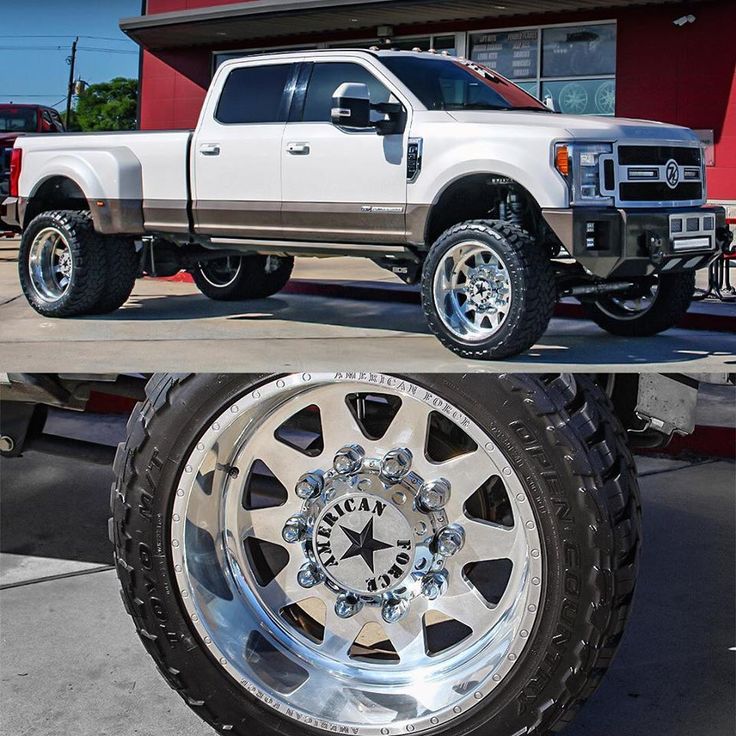 .. .. | Check Latest Deals | |
| Crossfire Dual Tire Pressure Equalization System, 110 PSI, one per pkg. (CF110STABT) | Check Latest Deals | |
CKAuto 6 Pack 45 Degree 90 Degree 135 Degree Metal Valve Stem Extenders, Universal Valve Stem. .. .. | Check Latest Deals | |
| AstroAI Digital Tire Inflator with Pressure Gauge, 250 PSI Air Chuck and Compressor Accessories... | Check Latest Deals | |
GSPSCN Silver Dual Cylinder 12V Air Compressor Pump for Car, Heavy Duty Portable Tire Inflator. .. .. | Check Latest Deals |
Posted on - Last updated:
Dually truck tires are a bit off the norm; instead of having only four wheels on your vehicle, you have six. You still have the traditional two tires in the front, but now you have four at the back, two on each side. We have scoured the internet for this article and asked the experts how you put air in dual tires. This is what we found out.
There are many ways to put air in the tires of a dually, and it all depends on the design of the top cap or the mags of the tires. There are aftermarket extenders or adaptors that you can use to inflate both the outside and the inside tires. You can also go the traditional way to inflate the outside, take it off, and inflate the inside tire, whichever option works best for you.
You can also go the traditional way to inflate the outside, take it off, and inflate the inside tire, whichever option works best for you.
Interested to learn more about inflating dually tires? Stick around as we discuss other related questions and common inquiries such as the proper PSI for your dually, how they work, and comparisons between a dually and a non-dually. We will also be suggesting some fantastic articles at the end of this write-up, so keep reading!
Before you continue reading, let us say we hope you find the links here useful. If you purchase something through a link on this page, we may get a commission, so thank you!
Inflating a dually relies on the design of the mags or the wheels. They are the design of the rims of your vehicle. Some rims have easy access to their interior tire valve. Others require you to take off the hub caps and rim caps for you to reach the valve.
Since you are dealing with two tires, reaching for the inner tire can be challenging, especially if the gaps in the rim design do not allow you to reach it without taking off the outer wheel.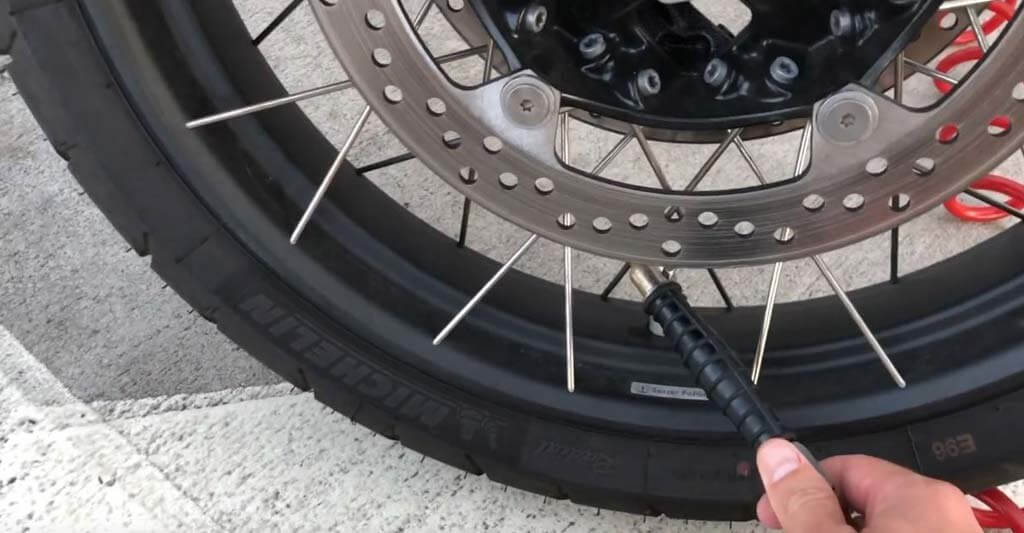
In cases like this, special extenders are used to make inflating easier. They are installed directly on the valve stem of both tires. This makes it easier to access as the extenders bridge the gap of the valve stems to your reach.
Click here to see valve extenders on Amazon.
Dually tires designs are different from non-dually as the outside tire's stem valve is facing inward and is usually covered by the rims. That is why valve extenders make it easier to access because it brings the valve outside.
You can also use a tire pressure monitoring system [TPMS]) sensor to continually and easily monitor the tire pressure of your tires. These sensors relay real-time data of how much PSI is on your tires. More on tire PSI in the next part.
Click here to see TPMS sensors on Amazon.
Some dually owners opt to change their rim design to have access to their valve stems easier without using valve extenders. This is another option for you but is more on the expensive side of things.
The video below illustrates how to put air in a dually by removing its hub caps.
Your tire's PSI is the unit of measure of the air pressure inside them. Having the correct tire pressure can make the difference between a good and smooth ride or a rough and bumpy one.
PSI dictates the ride quality that you have and your safety. If you have too much or too little air in your tires, there is a chance that you will puncture your tires. A flat tire while driving at high speeds can be very dangerous and cause accidents. This can endanger you and fellow motorists on the road.
Your PSI depends on the load of your truck. If you are empty and just cruising around, a recommended 70-80 PSI would be ideal. While if you are carrying or towing huge and heavy loads, a PSI of 120 would suffice to compensate for the heavy payload.
Refer to the recommended PSI limit embossed along the walls of your tires. Manufacturers set limits where you can only inflate a certain amount of air pressure to their tires.
Manufacturers set limits where you can only inflate a certain amount of air pressure to their tires.
Dually trucks are specifically designed to be work trucks. They are for carrying heavier loads than trucks with only one wheel on each side at the rear.
The same principle with non dually trucks still applies. The difference is the wheel studs are longer so that the lug nuts can secure both the inner and the outer wheel.
Dually trucks are subjected to heavier loads. The increased surface area the truck is in contact with via the two wheels instead of one creates a more stable feeling while driving. It also helps support the weight being carried or towed by the truck.
This depends on your usage and on the brand you are using. If you are on a daily racking up miles while towing or loaded with significant weight, the number of times you will be rotating your tires is more often than those who don't.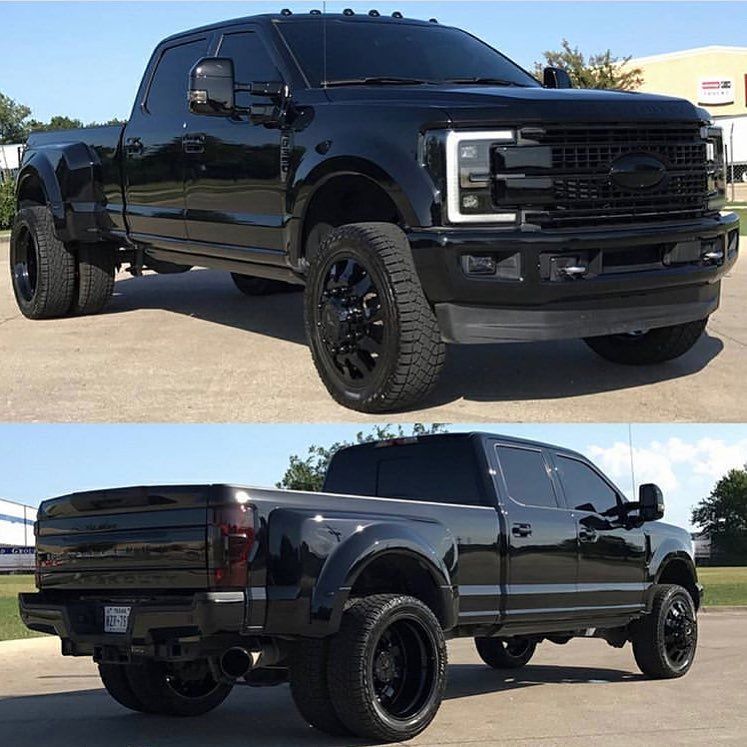
But in general, the average mileage before rotating your dually tires is usually in the range of 10,000 miles. Now, this is a conservative estimate. Many variables will have to be accounted for; sometimes, the number of miles will be shorter or longer.
Variables such as road condition, type of usage, and workload will all be taken into account. That is why regularly checking your tires is very important. It will save you from unnecessary problems brought about by uneven balding of your tire threads, but it will also prevent accidents.
You can also check if your wheel alignment is correct during an inspection. Misaligned tires can cause immature balding for your tires. You should immediately address this as it can cause you to need to change your tires more than expected.
Determining which type of wheel system for a vehicle depends on what you want and what you are looking to get from your vehicle.
Both dually and non-dually vehicles have their pros and cons. For the non-dually, it is much less maintenance. This is obvious because it has fewer wheels, resulting in lesser maintenance costs. They are also a bit smaller, so parking is easier.
For the non-dually, it is much less maintenance. This is obvious because it has fewer wheels, resulting in lesser maintenance costs. They are also a bit smaller, so parking is easier.
Some would argue that having a non-dually would give you a better turning radius for tighter and smaller driveways. However, today's truck innovations, a one-ton dually and non-dually, now have the same turning radius, some even better.
The dually gives you more power, more torque, and more stability. If you are carrying loads that are 20,000lbs and upwards, then having a dually will get the job done. If you notice, all heavy vehicles have two pairs of tires together at their rear. The benefits mentioned above are the reasons, so if there are more wheels, more benefits.
The downside is that the vehicle's dry weight is heavier than a non-dually. This means that the non-dually is more efficient regarding gas mileage.
The non-dually is also much easier to operate, lighter on the steering, and has lesser parts, making them much easier to work on for DIY upgrades and repairs.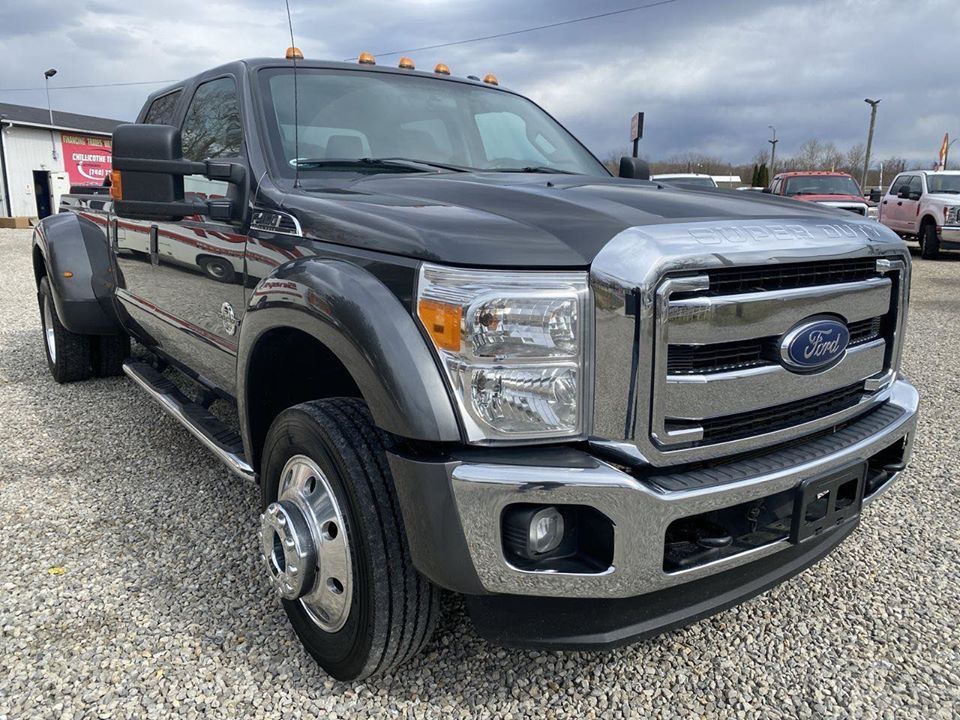
It is imperative to know what you will be doing with the vehicle. Having more power but not needing it can be a waste of resources. We suggest that you study which system works the best for you. But overall, if used correctly, both systems will serve you amazingly.
Yes, you can do off-roading with a dually. With the proper modifications and upgrades, there is no reason why you could not go off-road with an already very capable vehicle.
Dually trucks are high-powered and high torqued, both requirements for off-road vehicles. That is why they can be a great candidate for adventure beyond the paved path.
Although there are some drawbacks as they are not explicitly designed for off-roading, their size might be an issue as they are wider than a normal 0ff-roader.
Putting air in regular tires is different from duallys. They are much more challenging. Luckily there are multiple ways that you can air them. Some are easier than others, but it is up to you if you will choose the easy one or the hard one.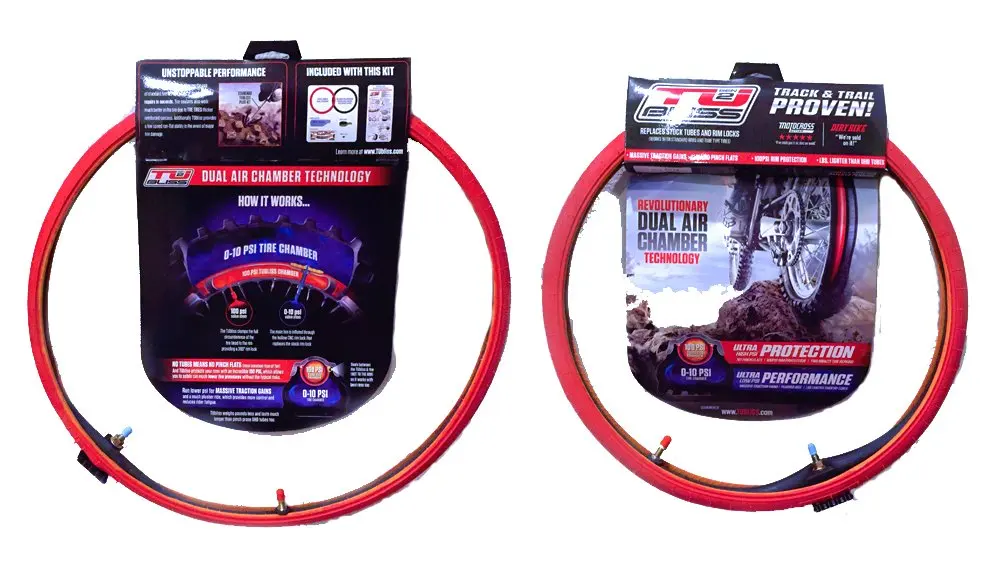 Dually trucks are much more capable than non-dually, but both have their own advantages and disadvantages.
Dually trucks are much more capable than non-dually, but both have their own advantages and disadvantages.
Here are related articles we have previously written. Go check them out.
Can You Put Regular Wheels On A Dually?
How To Convert A Truck To A Dually
What's a Dually Truck (And Do You Need One to Tow a Travel Trailer)?
In many publications, magazines, advertising materials, much attention is paid to information about the features of modern oversized tires (OHT), their operation rules, high-quality repairs, recommendations on what needs to be done to get the maximum returns, both technical and economic. And we are not the last ones on this list. However, to my surprise, I found an almost complete lack of information about the correct installation and dismantling of the CG and on the Internet, and from our colleagues - professional tire workers.
Proper mounting of an oversized tire on a rim is the first condition for long-term and successful operation of an oversized tire.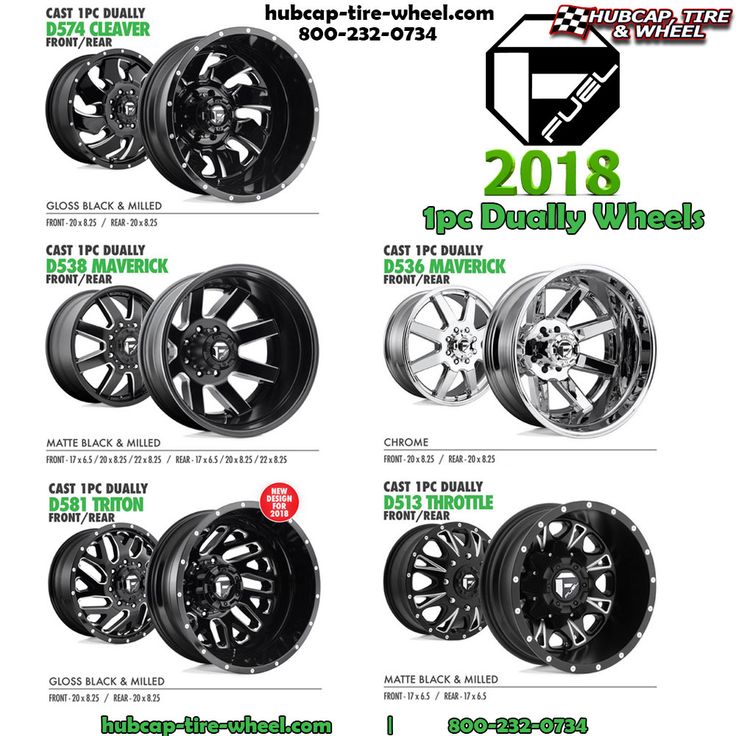 Back in the days of the USSR, the Dnepropetrovsk branch of the Research Institute of the Tire Industry, and later the Research Institute of the CGSH, developed in 1976 "Rules for the operation of tires for heavy vehicles, construction, road and hoisting and transport vehicles" .
Back in the days of the USSR, the Dnepropetrovsk branch of the Research Institute of the Tire Industry, and later the Research Institute of the CGSH, developed in 1976 "Rules for the operation of tires for heavy vehicles, construction, road and hoisting and transport vehicles" .
The rules were mandatory for all farms and enterprises operating tires designed for heavy vehicles, construction, road and material handling vehicles. Responsibility for the implementation of the Rules was assigned to the heads of farms and enterprises. Control over compliance with the Rules was carried out by ministries and departments to which farms and enterprises are subordinate. Persons guilty of violating the Rules were held accountable.
For 40 years, nothing fundamentally has changed in general. Except for one thing - there is no USSR, no Ministry, each enterprise forms the requirements for tires, their installation and operation based on the recommendations of manufacturers. There is no single standard and Quality Mark.
There is no single standard and Quality Mark.
So here are the basic rules that have actually been in effect all these years:
1. Mounting and dismantling of tires must be carried out at the tire fitting site using special equipment, devices and tools in conditions that prevent dirt from entering the tubes, rim tapes and tires. In the field, mounting and dismounting of tires should be carried out using mobile and portable devices. The use of a sledgehammer is prohibited!!!
2. Only serviceable tires, tubes, rim bands, rims, bead, seat, spacer and lock rings, corresponding in size and type, are subject to installation. New tires need to be fitted with new tubes and rim tapes. The same is recommended for tires retreaded by treading. For tubeless tires, it is recommended to use a new valve and O-ring.
3. Tires, tubes and rim tapes coming in for installation must be clean and dry.
4. Tires that have been stored at temperatures below 0 °C must be warmed up to positive temperature before mounting on rims.
5. When mounting a tire on a wheel rim, it is necessary to ensure the correct position of the chamber valve, avoiding its distortion.
6. Rims, side rings, seat rings, spacers and lock rings must be of correct shape, free of deformation or damage, free of rust and painted. Holes for fastening disks must not be developed.
7. When inflating tires for safety, use the special guards. To achieve a tight fit of the tire bead on the rim shelf, to avoid wrinkles and breaks in the rim tape and the chamber, the tires must be filled with air as follows:
8. When inflating tires, it is not recommended to unscrew the spools. The hose supplying compressed air during mechanical pumping must be equipped with a special tip that provides pressure on the spool needle for free air flow into the chamber, and a safety valve adjusted to the maximum allowable tire pressure.
9. To protect the spools from contamination and damage, all valves must have metal, rubber or other reliable caps. It is forbidden to replace the spools with plugs, plugs and other devices that do not allow measuring the air pressure in the tires.
10. Dual wheels should be installed so that the "windows" of the discs are aligned and the valve is brought out into the "window". This will facilitate access to the valve when measuring tire pressure. It is forbidden to install and remove one of the twin wheels of large tires without completely deflating both tires.
11. The outer tires must be mounted with the serial numbers outwards (with a non-directional tread pattern), and the inner ones - towards the cardan shaft.
Any expert will say that these are all current rules , but believe me - this is a quote from the above "ancient document". Unfortunately, many years of experience and stability of the requirements of manufacturers and Safety Engineering services do not exclude the occurrence of violations, and as a result, tire explosions, injuries, etc. It is known from practice that the most complicated and time-consuming process for the service personnel is the removal (shift) of the tire beads from the landing shelves of the rim (for non-separable rims), the removal of the rim from the tire (dismantling) and their preliminary assembly (assembly). The complexity of the shift operation is due to the phenomenon of "sticking" of the tire to the rim. The need to perform mounting-dismantling operations is determined in many cases by the type of rim (one-piece, split), its profile, as well as the scheme of operation of mounting machines, the design of a manual mounting tool.
It is known from practice that the most complicated and time-consuming process for the service personnel is the removal (shift) of the tire beads from the landing shelves of the rim (for non-separable rims), the removal of the rim from the tire (dismantling) and their preliminary assembly (assembly). The complexity of the shift operation is due to the phenomenon of "sticking" of the tire to the rim. The need to perform mounting-dismantling operations is determined in many cases by the type of rim (one-piece, split), its profile, as well as the scheme of operation of mounting machines, the design of a manual mounting tool.
Assembly and disassembly work is carried out in accordance with the manufacturer's instructions by qualified personnel using special equipment and tools. Busbars and sealing rubber rings supplied for installation must be clean and dry.
Rim base, removable bead flanges, removable seat ring, spring lock ring must be free from deformation and damage, cleaned of rust and painted.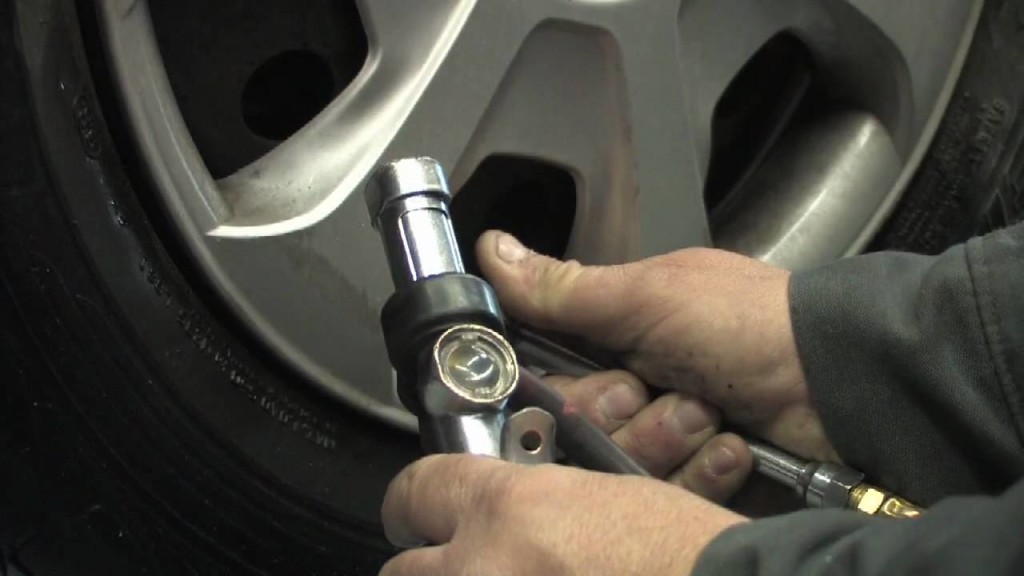
When mounting a tire on a rim, care must be taken not to damage the tire beads, sealing ring and rim elements that ensure tight joints. The tire assembly with the rim is shown in the figure.
| 1 - tire; 2,13 - O-rings; 3 - wheel rim lock ring; 4 - rim; 5 – wheel clamp; 6 – wheel hub nut; 7 - seat ring | 8 – side ring of the wheel rim; 9 - front axle; 10 - valve stem; 11 - valve; 12 - nut; 14 - valve body; |
Of course, the implementation and strict observance of the rules for mounting and dismantling the tire is the first and possibly the only way to safe operation, long-term and efficient operation of tires. Without exception, all tire manufacturers impose clearly defined requirements for the operation of mounting and dismantling, operation, storage and transportation of tires. Proper dismantling of the tire requires maintaining all the performance characteristics of the tire intact, not violating the integrity of the landing zone shelf, and removing the tire from the rim without damage. Of course, it all starts during installation: the correct mounting paste must be used, which, in addition to ease of installation, will also protect the tire and disc at the point of contact from corrosion. After all, a tire is sometimes used on a rim for more than two (!!!) years. And in the future - will provide easier removal of rings and tires from the rim.
Of course, it all starts during installation: the correct mounting paste must be used, which, in addition to ease of installation, will also protect the tire and disc at the point of contact from corrosion. After all, a tire is sometimes used on a rim for more than two (!!!) years. And in the future - will provide easier removal of rings and tires from the rim.
Manufacturers of tire fitting equipment are also moving forward on these issues.
Company SCHRADER (France) is one of the world's leading manufacturers of high-tech modern equipment for mounting and demounting large-sized, special, industrial and agricultural tires. The range of offered equipment includes special bead clamps for various types of rims, which are successfully used by many enterprises and professional tire service companies.
Until now, all models of bead breakers offered on the market have been quite clearly positioned according to their purpose: three-piece discs, five-piece discs, bore diameter, etc.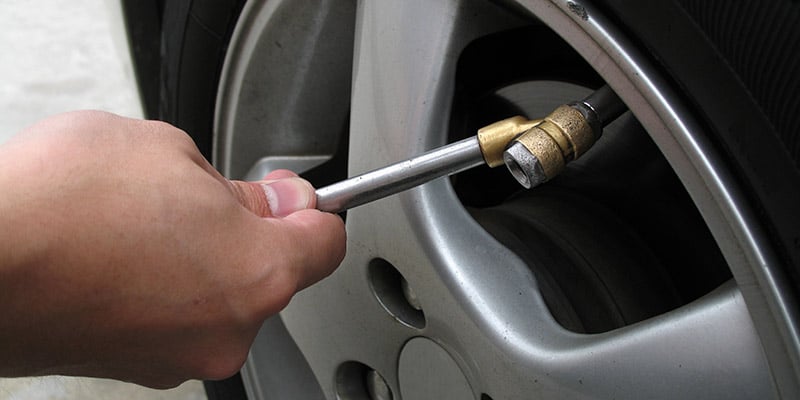 One of the main parameters was the pressing force, the maximum length of the overhang ... But from experience, everyone clearly understood that this equipment works effectively mainly with radial tires. If you got a diagonal tire 24.00-35 or 35/65-33, then the amount of technical work will be 2-3 times more than on a radial tire. Dump trucks with a carrying capacity of 55-60 tons are one of the most common vehicles used by mining companies in the Russian Federation today. Many people actively use bias-ply tires, given their relatively low cost compared to radial tires. It should be noted that equipment for mobile assembly/dismantling is used not only when visiting customers or in cases of emergency work in the "field". Given the versatility, ease of use, compactness, low weight and cost-effectiveness, such equipment has recently been increasingly used in stationary workshops of service companies and large enterprises.
One of the main parameters was the pressing force, the maximum length of the overhang ... But from experience, everyone clearly understood that this equipment works effectively mainly with radial tires. If you got a diagonal tire 24.00-35 or 35/65-33, then the amount of technical work will be 2-3 times more than on a radial tire. Dump trucks with a carrying capacity of 55-60 tons are one of the most common vehicles used by mining companies in the Russian Federation today. Many people actively use bias-ply tires, given their relatively low cost compared to radial tires. It should be noted that equipment for mobile assembly/dismantling is used not only when visiting customers or in cases of emergency work in the "field". Given the versatility, ease of use, compactness, low weight and cost-effectiveness, such equipment has recently been increasingly used in stationary workshops of service companies and large enterprises.
At the beginning of 2017, the company introduced a new powerful bead breaker to the market:
SUPER KOUSMA BEADBREAKER – Ultra light (only 14. 5 kg) reinforced aluminum tool with high quality connector for intensive use.
5 kg) reinforced aluminum tool with high quality connector for intensive use.
Conforms to EN12100-1, EN12100-2 and 2006/42/EC Standard. He organically complemented the line of KOUSMA BEADBREAKER bead breakers manufactured by SCHRADER for tire dismantling.
This tool has a set of almost unique properties and allows you to successfully work with tires 24.00-35 diagonal design, as well as taking into account those. characteristics, can be used when working with tires 27.00R49.
Taking into account the many years of experience with such a tool, it should be noted that the development of the technical capabilities of a mobile tool, its versatility provides an excellent opportunity to modify the process of disassembling the CNG and make it safer.
LLC "TK Raut" is the official distributor of the company SCHRADER in the Russian Federation and will be happy to provide you with the opportunity to get acquainted with the full list of professional tools for mounting and dismantling of overhead cylinders.
(
Updated:
15/07/2021
)
Article contents
What should be the tire pressure for a light trailer?
The safety of all road users and the life of the tires depend on the correct answer. After all, pumped tires can burst on the go, causing an accident, and flat tires are erased around the edges in a couple of seasons.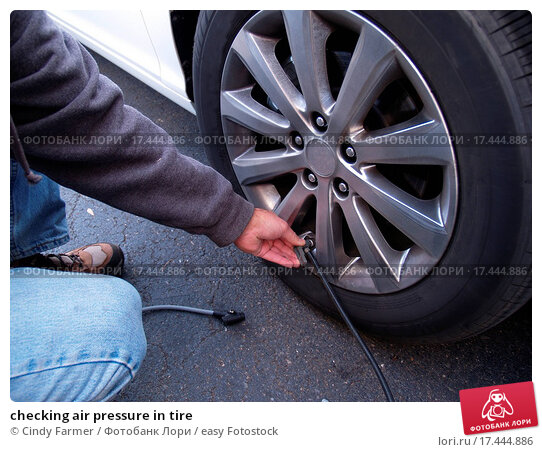 And if you have a passenger car (mini-tractor or walk-behind tractor), you should read this article and find out the control rules, as well as the permissible tire pressures for a single-axle or two-axle trailed structure.
And if you have a passenger car (mini-tractor or walk-behind tractor), you should read this article and find out the control rules, as well as the permissible tire pressures for a single-axle or two-axle trailed structure.
According to the generally accepted classification, a trailer structure for a passenger car (motoblock, mini-tractor) can be:
In addition, trailer structures can be universal or special. On universal models, you can carry anything. Special options are designed for a specific type of cargo, so they include:

Trailer tire pressure depends on load capacity and construction format. In addition, it is affected by the ambient temperature, the type of suspension, and the design features of the drawbar.
Remember, the recommended pressure in a heavy or light trailer tire is determined only by the manufacturer. Therefore, the permissible pressure values are displayed in the technical data sheet of the trailed structure. There are two numbers in this document: the pressure in the tires for single and dual placement on the axle.
In most cases, a car wheel is inflated to 2-2.1 atmospheres. Do the same with trailer tires. However, the pressure in the wheels of a walk-behind tractor trailer can be significantly less. For example, a cargo trailer for a car or motoblock model UAZ-8109 (Ishimmashzavod) allows only 1.1 atmospheres. The Skif-500 and Skif-700 models are designed for the same indicator.
Boat trailer tire pressure does not fall below 2 atmospheres. However, the boat trailer model 81771A of the Moscow Special Vehicles Plant allows pressure up to 2.1-2.4 atmospheres.
Winter Drive protection
Tires Goodyear UltraGrip Arctic 2 SUV
Winter Drive Protection Sound Comfort
Rating:
4.5
Tires Goodyear UltraGrip Ice 2
Winter Drive protection
Tires Goodyear UltraGrip Performance+ SUV
Winter Drive protection
Tires Goodyear UltraGrip Arctic 2
Winter Drive Protection Run On Flat Sound Comfort
Tires Goodyear UltraGrip Performance+
Tire pressure can be checked at any service station.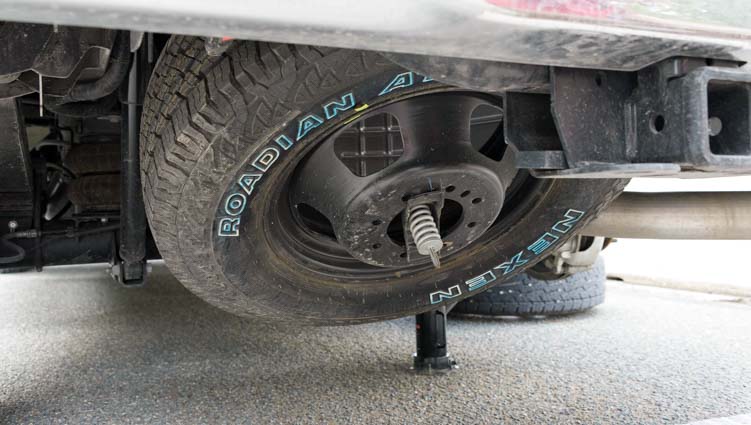 In addition, this can be done with a pressure gauge by connecting the device to the tire nipple. If you don’t want to check tire pressure for money or mess with a pressure gauge, buy a simple display system (caps with labels) or a full-fledged controller connected to a car computer via a wireless channel. Using these devices, you can control the amount of atmosphere in the tire at any time.
In addition, this can be done with a pressure gauge by connecting the device to the tire nipple. If you don’t want to check tire pressure for money or mess with a pressure gauge, buy a simple display system (caps with labels) or a full-fledged controller connected to a car computer via a wireless channel. Using these devices, you can control the amount of atmosphere in the tire at any time.
Why do this? First of all, to extend the life of the tread. If you overinflate a tire, the tread will wear off in the central part of the contact patch. If you carry loads on a flat tire, the tread will wear off along the edges of the contact patch. In any case, the wheel will last no more than three years (and not 4-5, as stated in the passport).
In addition, to prolong the life of the wheels, you need to think about the degree of appearance of the trailer structure and the speed of the hitch. If the operation of trailers for a walk-behind tractor does not allow a load of more than 500 kg and a speed of more than 80 km / h, do not try to carry a heavier load in the body.